Friday 3 August 2018: Roger
Up at 5.45am for a cold shower and breakfast, with Christmas music playing in the background, we were ready for our flight south. The Kuriftu Resort is probably the flashest place we have stayed at so far but hot water for a shower was not working today. The breakfast was great though and by 7.30am we were at the airport and through the first set of security. Despite being on a charter flight we still had to go through the full double security process.
At 8.30am we took off in the Cessna Caravan heading south to Addis Ababa. This country has to be the food bowl of Africa as every available bit of ground we flew over for the next 500kms seemed to be cultivated. A quick refuel at Addis, with a couple of dilapidated old DC3s in the background, and we were back in the air.
Heading south toward the intersection of the Kenya, Southern Sudan and Ethiopian borders the land stayed much the same with vast expanses of agriculture even as it got steeper with huge cliffs and ravines. It was not until we were around 400kms south that the hilly land became arid and scrubby. It eventually flattened out and we spotted the village of Murule not far from a large cotton field, irrigated from the Omo river. It looks somewhat out of place here. We flew over a clear patch of dirt, circled and soon were on the ground to be greeted by Lale, the camp owner and manager, who was surrounded by kids carrying AK assault rifles. They were there for a chat while looking after their goat and sheep herds.
We headed to the river in a land cruiser and boarded a boat. Hundreds of cows, goats and sheep we gathered on the beach having being driven there by their minders for their daily drink. As we headed up river people looked on from the east bank and Nile crocs from the west. The Cessna climbed out above us on its way back to Addis.
Over the next 40 minutes we spotted more crocs, baboons, colobus monkeys, a de Brazzas monkey, Goliath herons, African fish eagles, people washing, walking or just laying around on the river bank, and lots more mobs of stock drinking on the beaches. Areas of bush on the riverbank were being cleared to plant sorghum grain.
On arrival at Lale’s camp we were escorted to our tent, stowed our kit and adjourned to the dining tent for lunch and a briefing. Unfortunately the visit to the Mursi tribe (the one where woman have plates in their lips) is off the agenda; since the Gebe Dam was finished three years ago the river no longer floods, which used to fertilise the land for the next crop and as a result the Mursi have had to move into the hills some distance from here in order to find enough food.
Time is an interesting thing in Ethiopia. A few days ago in Lalibella we needed to go to the bank to get some money changed. Asking at the hotel reception the guy said the bank is open from 6 to 11. As it was around 3pm we trotted off thinking we could get money the next morning. Then suddenly we realised he may have been talking local time. And as it turned out he was. This is how it works here: 6am (daybreak) is 1am their time. They have 13 months in a year; 12 have 30 days and the 13th has 5, or 6 in a leap year. But down here they just point to the sky saying I will meet you when the sun is here.
At around 5pm, or in local time when the “day cools off”, we met with Lale to join the local Karo people. Twice a week groups of villagers gather away from the village to get dolled up, then head back and parade around the village. We strolled among them as both men and woman applied their, not war paint, but beauty paint, derived from various clays and plants, often with very intricate designs. They were rapt as I took photos then showed them on the camera screen.
Men sat gathered in one group, married woman in another, the single woman in a third group, while kids, boys mostly naked and girls with a cloth around their waist, roamed amongst them all. AK assault rifles lay around leaning on trees and logs. Interestingly talking to Lale later he explained that these have brought peace to the local tribes and villages.
During lunch Lale was telling us it had been a couple of years since a crocodile had eaten one of the local kids, but lots of goats get eaten. Just then a shot rang out close by. Apparently a croc was having a crack at a goat. Lale went on to explain that prior to the AKs (sourced from both Somalia and Southern Sudan) when people stole stock they would be hunted down and killed with spears. Since the guns arrived no-one steals anymore.
Saturday 4 August: Sylvia
We woke early this morning to the sound of colobus monkeys calling, punctuated by the rooster crowing in the nearby village and starlings in the trees around us. After another cold shower (I am even getting used to them now) and a quick coffee, we headed off upstream at about 7am, motoring for about 30 minutes to a very dusty and barren area on the far bank where we stopped to visit the Nyangatom tribe. These people arrived in the area some 25 years ago from Southern Sudan. Originally in small groups, the Karo tribe were happy to allow them to farm alongside them on their land but as more and more of them arrived things got very tense and they eventually took over all the land on the west side of the river. Nowadays the elders have come to a peaceful settlement but tensions were clearly fraught for many years.
We walked about 700 meters to the village passing numerous cactus bushes and surprisingly beautiful desert roses. We also saw many locusts clinging to the branches on the scrubby trees.
We passed a large thorn enclosure, with many cattle inside tended by a few young men, then arrived at the village itself. The Nyangatom are nomadic and had only arrived in this location in the last few days. The women have built about 13 grass huts and the compound has been encircled by thorn bushes for protection. Some young kids came running to welcome us, removing the large thorn bush that passes as a gate for us to enter.
Inside the compound the huts were scattered about, other thorn-encircled enclosures held goats, sheep, donkeys and more cattle. There would have been well over 1,000 animals in total. Women tended their fires, brewing the local coffee, which is made with the husks from the coffee beans rather than the beans themselves. The men sat on their little stools drinking the coffee from large calabashes. As usual Roger was mobbed by children, who love looking at their photos on the screen of the camera.
The Nyangatom practice scarification as a form of beautification. Many of the women had scars carved into their stomachs and some of the men had them on their arms. The elder of the tribe had large scars all over his torso, apparently a sign that he has killed one or more of his enemies.
The women mainly wear goat skins, shorter in the front and long in the back. The men tend to wear a piece of cloth wrapped around their middle although some have shorts and/or t’shirts. Many of the kids wear raggedy clothes but the younger buys are generally naked. The women and girls all have many beads around their necks and even the males wear single strands around their necks and sometimes arms too.
We felt extremely privileged to be invited into the village while they went about their preparations for the day ahead.
We headed back to camp for breakfast, sitting in the dining tent and being served like royalty while the local women wandered past carting water from the river. I wonder what they think of us?
We then headed back upriver. If I had any concerns about whether the villages were set up purely for tourism they were completely dispelled as we motored past numerous people going about their daily routine: women worked the ground in their skins, saggy breasts banging against their chests ( I was reminded of an article I read recently that women should not wear bras as if they don’t their breasts will naturally tighten up – obviously whoever wrote that had never seen these fit, healthy women with their “spaniel-ear” breasts – Roger’s term!); men and boys tended their stock, some even stripping off naked to wash in the river, showing no signs of embarrassment or concern as we motored past.
After about 90 minutes we arrived at another Karo village further upstream. Some NGO spent a lot of money about 8 years ago putting in a solar powered pumping and filtering station so the women didn’t need to carry water from the river. They left it in the hands of the government to maintain but it hasn’t worked for at least the last two years.
Because it was the middle of the day only a few people were about, mostly women and children sitting under a shade in the centre of the village. The huts here are primarily wood with thatch roofs. There are small circular storage buildings dotted about where they keep their grain. They spread out a clean goatskin for us to sit on and brought us coffee in calabashes. One little boy had been stung by a bee and was sporting a large swollen lip.
After an hour or so we headed back to camp for lunch and to rest out the heat of the day.
Just after 5pm we met Lale and took the short drive to the Karo village nearest the camp where the tribes people from all three Karo villages meet once or twice a week for a dance. The men have again painted their bodies and the women their faces although this time in one colour only without the additional decoration. The men stand around one side of the circle with their little sitting stools on their shoulders, the elders at one end and the young men at the other; the women stand on the other side – there is lots of chatter and laughing. Kids run around the outside, rolling in the dust, playing together and laughing. The dancing consists first of groups of men jumping as high as they can while others clap, the women doing a different jumping motion. Later on individual men take turns jumping, showing off their strength. Then men and women dance together, but not with their wives/husbands. The dancing finishes about 6:30pm and they take a break until 9ish. Apparently when they start again only the unmarried women are allowed to join.
Behind the dancing area is a large meeting hall where the married adult men (those who have jumped the bulls and had the top of their left ear cut) meet to make important decisions for the tribe. It has ten different areas staring with the elders all the way to the newest members but when decisions are being made all voices can be heard equally.
Sunday 5 August 2018: Roger
Coffee was served at 6.30 after which we mounted the Land Cruser and headed northeast on a dirt track to visit a small family from the Hamer Tribe. As we bounced along we spotted a number of dikdiks, one stopping to look back as it sped away.


After crossing a dry creek bed we arrived at a couple of huts to be greeted by a couple of engaged sisters who were about to set off with their donkey to get water, about a five hour task from here. Red hair is quite popular with the women around here (Karo and Hamer tribes). It is taken strand by strand and braided with a mixture of butter and clay.
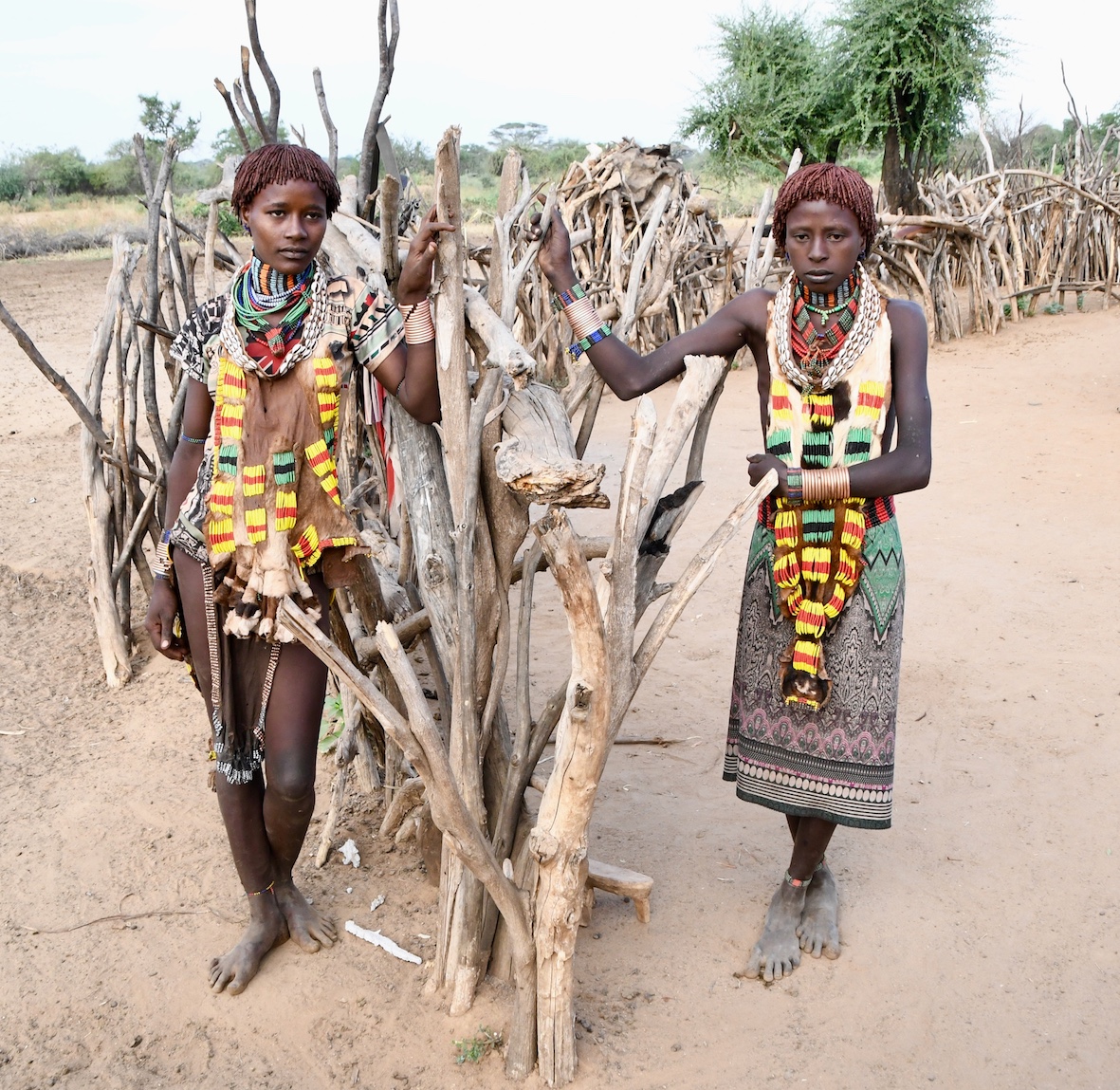


They invited us into one of the fly filled huts where a pot boiled on an open fire. Ignoring the thousands of flys that settled on them and us they were happy to serve their coffee in bowls made from calabash. This stuff tastes even weaker than earl grey tea.


Soon we were joined by another young woman, then her mother and sister, followed by another young woman who were just dropping by for coffee, a common practice around here. It is only the father and first and sometimes second wife that get to sleep inside a hut; the rest of the family sleep on the ground outside except in the rainy season.


 

Relationships vary from tribe to tribe here. The two sisters that invited us in here are both engaged. That means the families organised who the husbands will be, the husband to be then waited with a couple of mates for the girl to come along, grabbed her painted her in cow dung and left. The engagement will last five years then after the husband has run the bulls ( they have to run across a coral full of cattle to become a man) a wedding can take place. During the engagement the girl can do as she likes as can the man. One of these girls has been pregnant and performed an abortion so she is free of children for the wedding.
In the Karo tribe until recently if a girl got pregnant before manage they carried the baby to full term then literally threw the baby in the bush. This practice has now mostly stopped.In this tribe if a man shags another man’s wife and gets caught then it is the man’s fault and he is killed (The wife is the property of the husband – after all he paid 127 goats for her). It seems the authorities respect these traditions and do not intervene.
As we emmerged from the hut a few of the local men had gathered for a yarn by a tree.

 

An aircraft had been spotted overhead and it was presumed it was for us even though several hours early. A much faster trip was made back to camp where we packed our gear, had a tasty breakfast and boarded the boat for the down river trip to the air strip, the boatman looking as serious as ever. We passed a belly-up croc floating mid-river. It had been shot late yesterday while trying to take a goat.
A taxi up the runway into the wind to make sure it was clear of stock, a quick turn and the Caravan lifted early into the air in spite of the tail wind.



 

On landing back in Addis Ababa we were eventually picked up by our driver and taken back to the Sheraton Hotel for a relaxing afternoon. We were picked up again at 7pm and taken to 2000 Habesha traditional restaurant and cultural show with a band consisting of a flute, two kirars (a 5-stringed guitar like instrument), a set of drums and a masinko (a bit like a one-stringed violin). These guys bashed out a fair bit of traditional music, at times accompanied by dancers, singers or sometimes both.












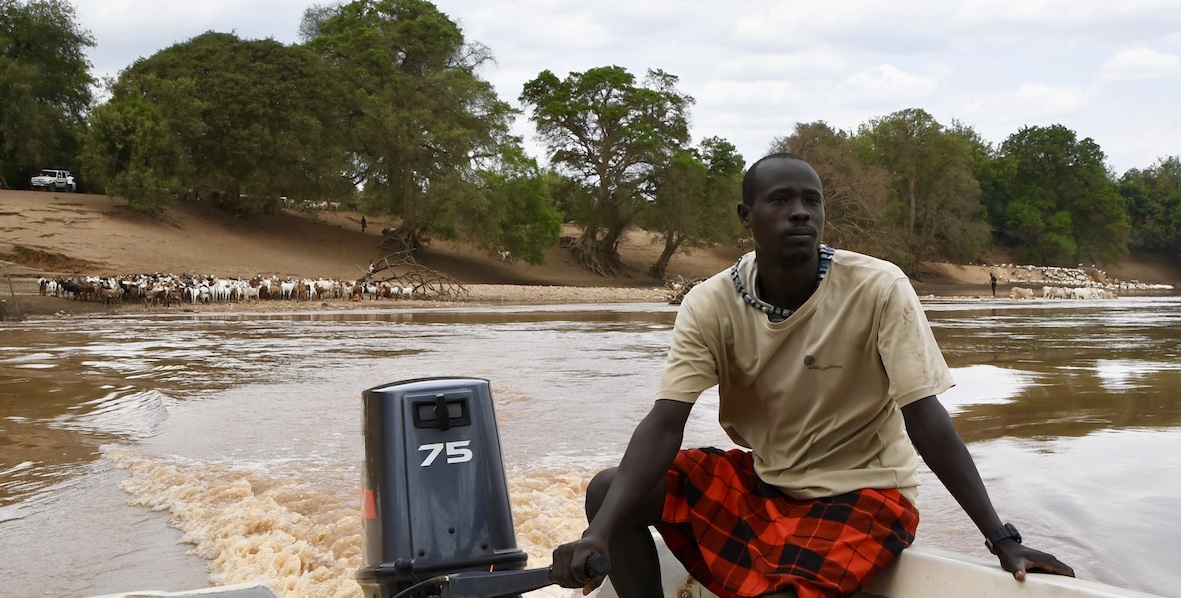











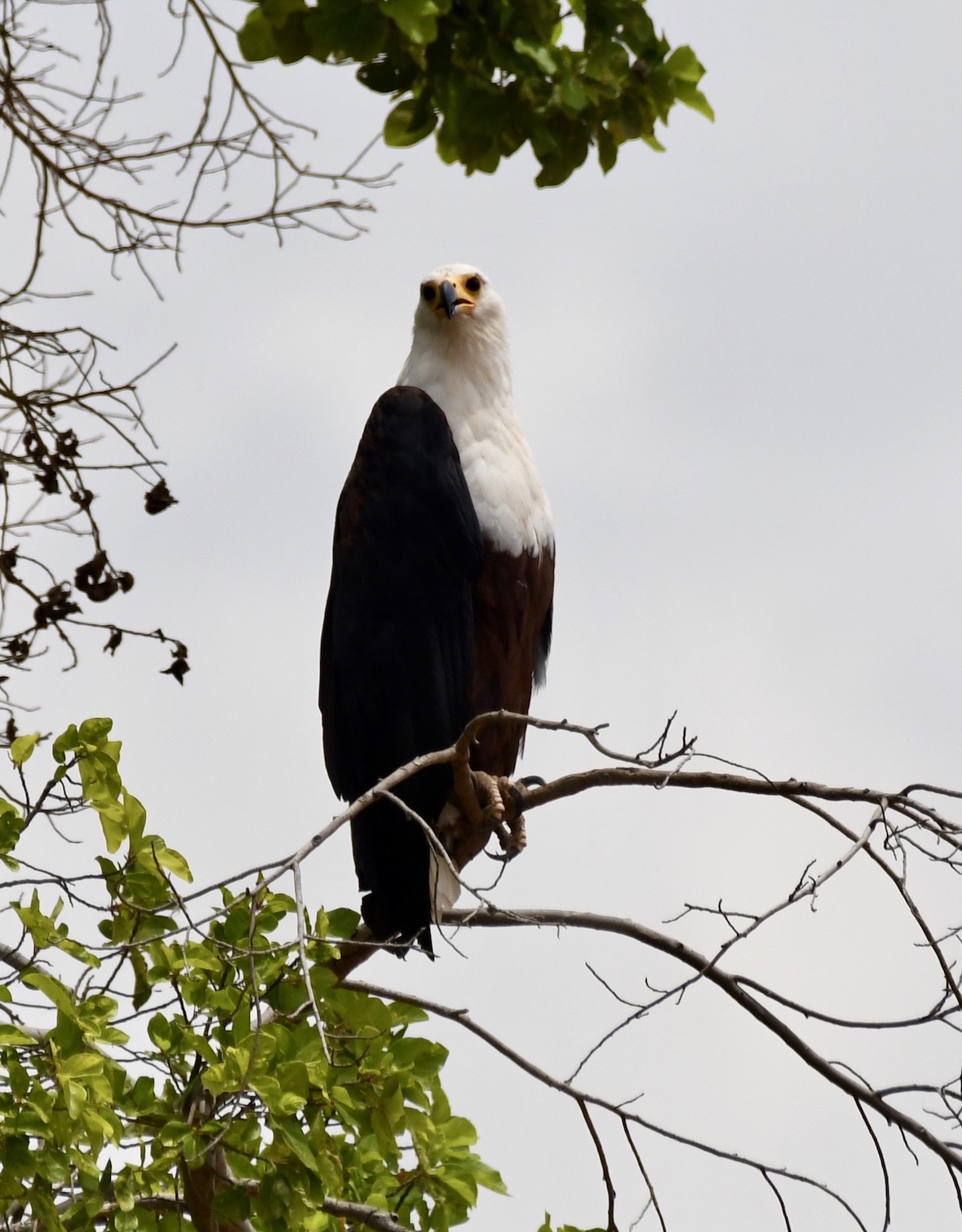














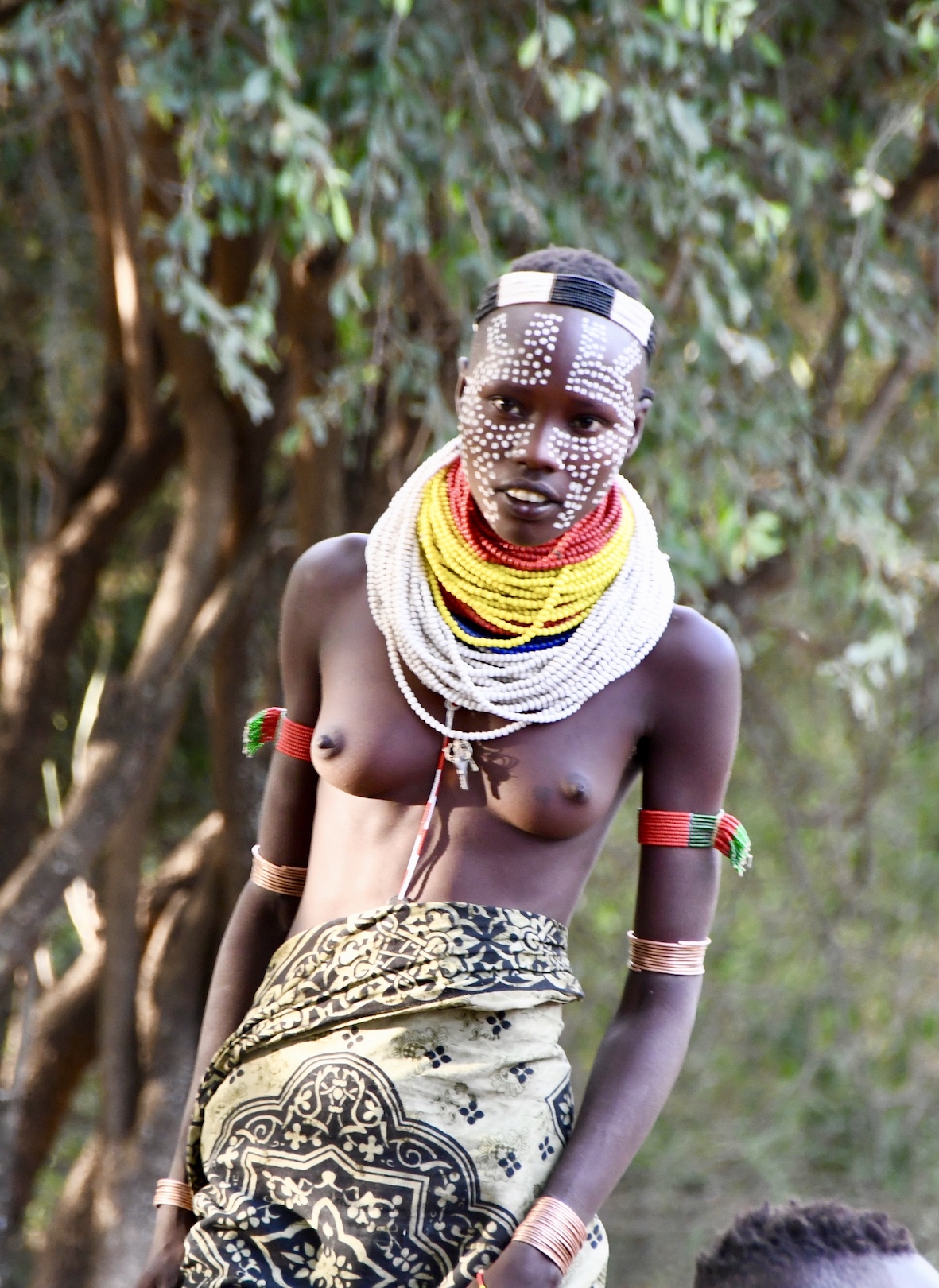

























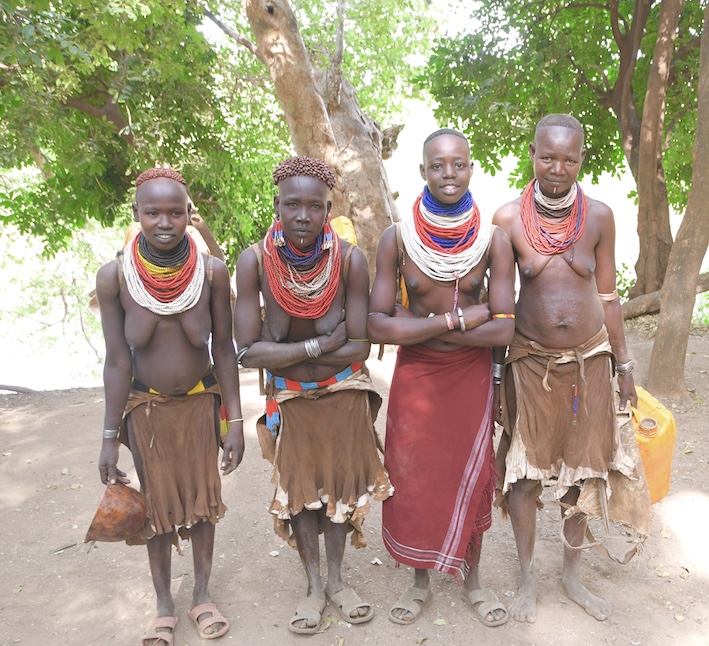
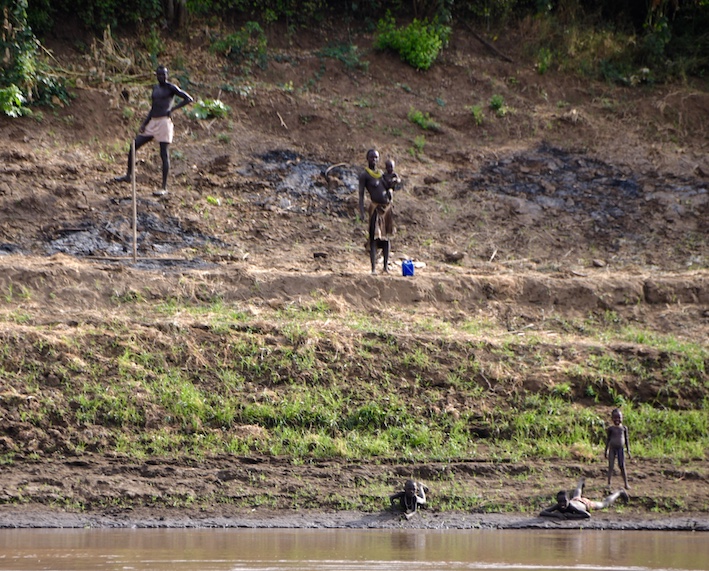



















There were a number of older woman. Took many more photos that are not in the story.
Amazing photos Roger. Was wondering if there were many older woman in the tribes or did they stay in the background? I guess you will not be making the AGM meeting at APC this weekend. Enjoy the rest of your trip. Maureen and Neil
Wow!! What an amazing blog. So detailed and such fabulous photos. Thank you soooo much you two. I detect a lot of interest from the cameraman on the village women!
Great to talk to you tonight Sylvie. Enjoy the next amazing part of your journey. Xxxx
another great read!!!!!